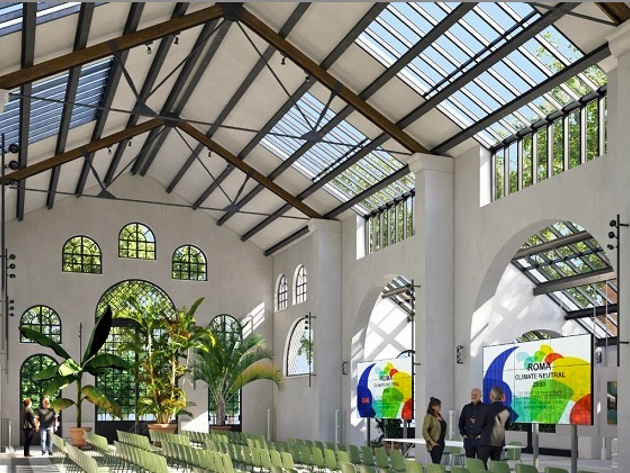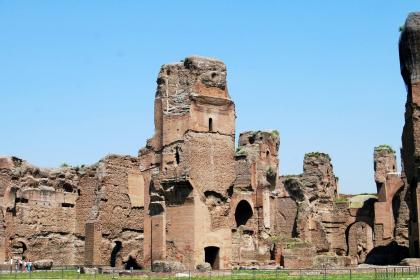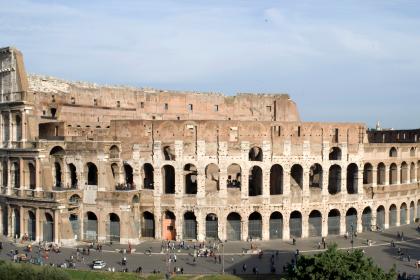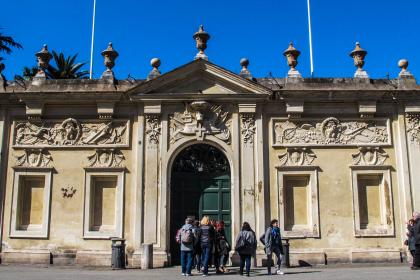
The Orangery and the monumental Greenhouse of San Sisto are located in via di Valle delle Camene, in the centre of Rome, near Caracalla’s Baths. The historic Greenhouse building - a single floor with a gable roof - was built in 1926 based on a design by Raffaele De Vico (1881-1969), one of the protagonists of landscape architecture in the first half of the last century for the production of valuable plants to be allocated to the city's gardens. During his long career, starting from the early 1900s, during which he adopted the neo-Baroque poetics in vogue in those years, called "Roman Baroque", De Vico dedicated himself to the design and management of the works of the majority of public gardens of Rome, creating important monumental works also in the building architecture sector.
The building is currently undergoing complete restoration, consolidation and energy requalification works. The renovation work was necessary due to some structural damage ascertained already in 2020 which compromised its full usability. The approved project has totally changed the initial approach of the intervention, no longer limiting it to structural consolidation alone but aiming above all to make it a pilot model capable of combining conservative restoration with the application of technologies and solutions aimed at environmental sustainability.
The restoration, financed with 4.45 million euros, involves the installation of glass modules with transparent amorphous silicon produced specifically to respect the original design of the historic glass roof and capable of powering a photovoltaic system which will have an annual production of 14 thousand Kwh / the year. Furthermore, thanks to the integrated use of latest generation energy strategies and complete insulation of its envelope, the building will be able to reduce its energy needs by 75%, therefore producing more energy than it consumes and the excess energy will be fed into the grid to power the lighting of the park and the surrounding buildings.
Candidate for LEED gold level certification, the highest level required by global building eco-compatibility standards, the Sisto Orangery will also be a zero-emission building, an exemplary case study for the restoration of historic buildings in terms of energy saving.
The energy strategies used have entrusted the purification of the air to the inclusion of four "Air Factories", i.e. cases full of plants with large leaf surfaces, equipped with a phyto-purification system which amplifies the natural capacity of the plants to retain and degrade organic and inorganic pollutants, to transform them into nutrients for plants.
The air conditioning of the building will be obtained with the geothermal technology of the "Canadian Well", i.e. 20 underground cable ducts which will exchange the temperature of the air with that of the ground. We would also like to remind you that a system of gutters integrated into the profile of the building has been inserted for the recovery and recycling of rainwater for the irrigation of the plant specimens that will be kept indoors and those outside the Garden Service park.
Finally, the interventions will include the depaving of the entire external perimeter of the building, a surface now made of asphalt of over 4,000 m2 which will be replaced with draining material and a turf made of lippia, a plant with low water needs, will be laid.
The inauguration of the new Orangery is scheduled for September 2025.
Photo credits: project of the new Greenhouse, official website of Roma Capitale
Les Thermes de Caracalla

 Condividi
Condividi
L’Amphithéâtre Flavio (Colisée)

 Condividi
Condividi
Informations
Temporarily closed to the public for redevelopment work.
 Condividi
Condividi
Location
Pour connaître tous les services d'accessibilité, visitez la section Rome accessible.












































